Tom's Guide Verdict
The Blink Video Doorbell is cheap, but there are better options for less than $100.
Pros
- +
Easy to install
- +
Long battery life
- +
Works on both wired and battery power
Cons
- -
No package detection
- -
Very narrow field of view
- -
Mediocre video quality
Why you can trust Tom's Guide
Video Resolution: 1080p
Field of View: 135 degrees horizontal, 80 degrees vertical
Works with: Alexa
Size: 5.1 x 1.7 x 1.1 inches
Wired/Battery: Yes/Yes
Package Detection: No
Starting Storage Fee: $30/year for 60 days video
When it comes to the best video doorbells, there are now a lot of options available for less than $100, which puts the Blink Video Doorbell up against increasingly stiff competition. Blink makes one of the best outdoor security cameras, so I was interested to see how its video doorbell would compare against other sub-$100 video doorbells from Ring and Wyze.
As I discovered during my Blink Video Doorbell review, you have to make a lot of compromises when paying so little. It’s worth skipping this model, unless you’re on a really tight budget.
Blink Video Doorbell review: Price and availability
The Blink Video Doorbell has been available since October 2021, and costs $49.99. You can order it in either white or black.
However, if you want two-way audio, or want to look at a live feed from the video doorbell at any time — not just when it detects motion or someone presses the button — you’ll also need the Blink Sync Module 2. The Sync Module also lets you store videos locally if you plug in a USB stick. You can purchase the Sync Module separately for $34.99, or buy it with the video doorbell for $85. There’s no savings if you purchase the two together.
You should also note that Blink does not sell a wireless chime with its video doorbell. If you’re not planning to hardwire the doorbell, or you don’t have an existing chime in your home, the only notification you’ll receive when someone presses the doorbell is through your phone. One workaround is to link the Blink Video doorbell to an Amazon Echo Dot. I recommend the 3rd-gen Echo Dot, which is selling for $39.
All in, you’re looking at spending about $125 — and that’s before you add in the cost of a Blink subscription, which starts at $3 per month, and which you’ll need if you want to actually save any videos.
While the Blink Video Doorbell is one of the less expensive models out there, it’s not as cheap as its initial price may suggest.
Blink Video Doorbell review: Setup
One thing I like about Blink’s Video Doorbell is that it’s designed so that you connect the wires from your home to the base plate, rather than the video doorbell itself. After installing more than a dozen video doorbells, I’ve found it’s a lot easier to connect the wires to a base plate, and then connect the doorbell to the base plate. The Ring Video Doorbell (2nd gen) requires you to connect the wires directly to the doorbell, which can be a pain, as the weight of the doorbell itself will pull on the wires.
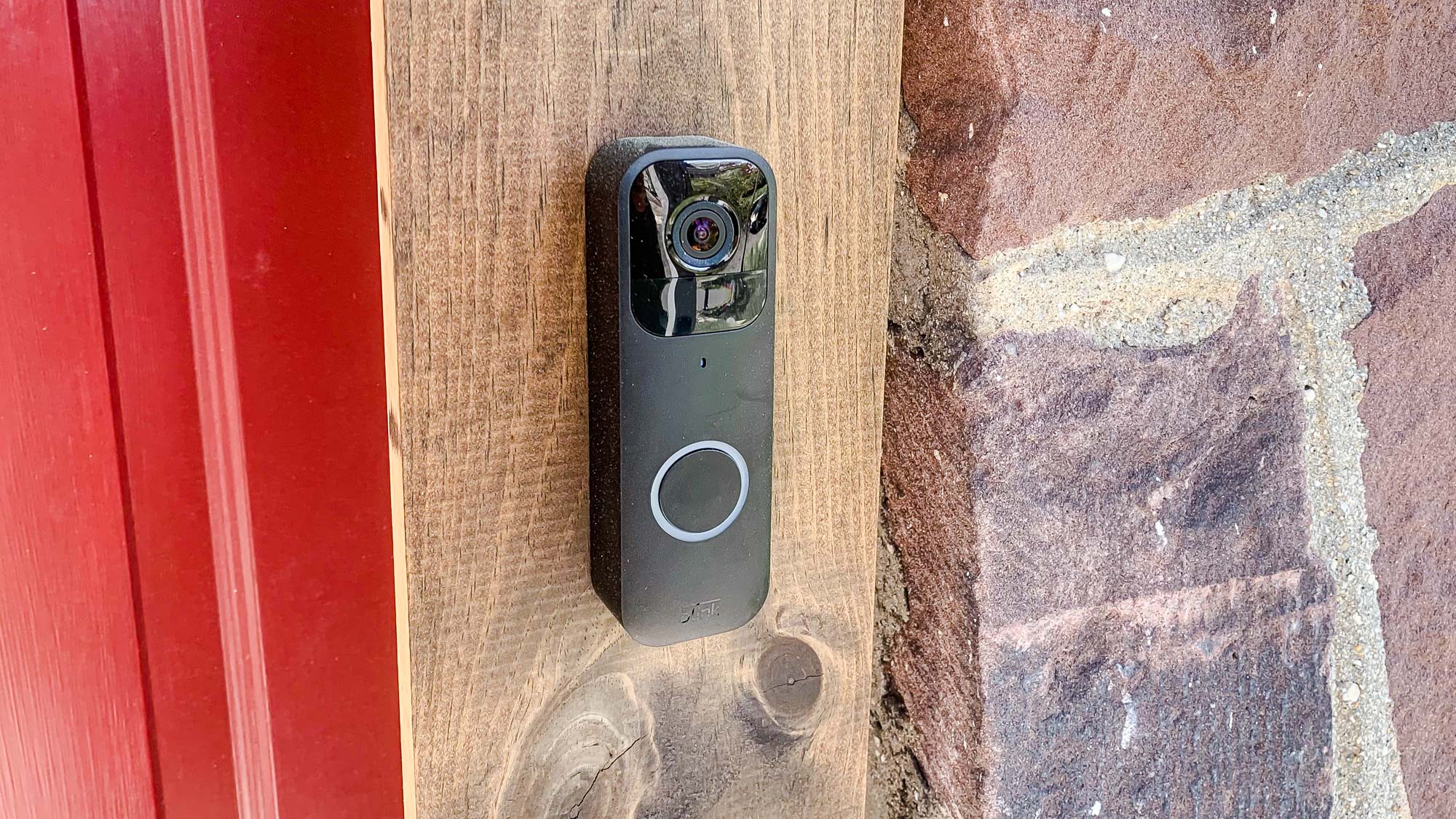
Blink’s Video Doorbell can run off the same power as your traditional doorbell, or work off battery power alone. Similar to the Blink Outdoor cam, the Video Doorbell uses two AA batteries, which the company says will last for up to two years. While this will vary depending on how often you have visitors, having used the Outdoor Cam, I can say that Blink’s estimate is reasonably accurate. I do wish that its battery were rechargeable, though.
Blink Video Doorbell review: Design
There’s nothing all that interesting about the look of the Blink Video Doorbell. Like most others, it’s about the size of a Snickers bar, with a camera at the top and a button at the bottom. I don’t particularly care if my video doorbell makes a design statement, and I suspect those looking for a budget video doorbell won’t mind its plain appearance, either.
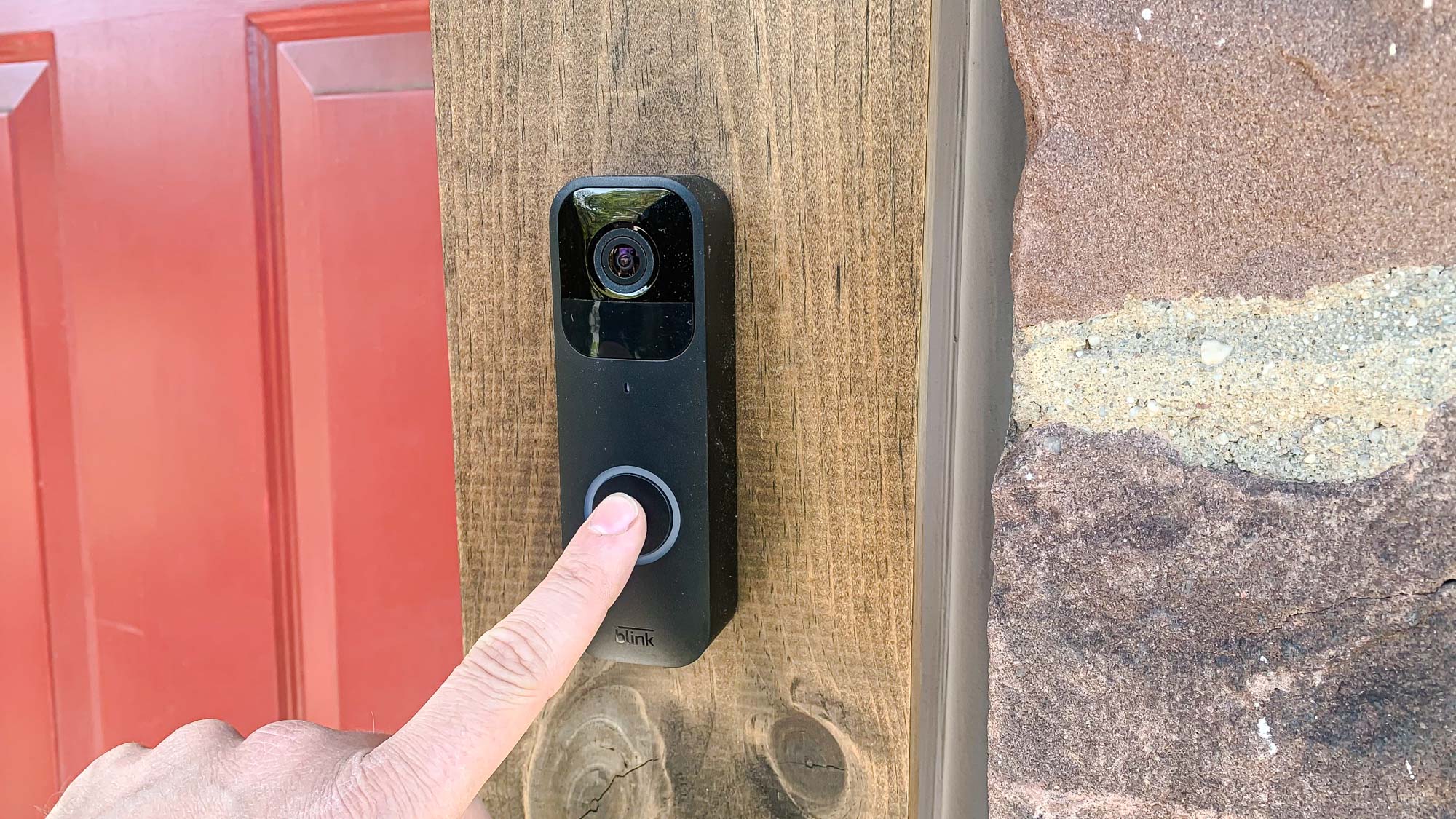
The button itself is very click-y, and doesn’t feel as satisfying to press as other models I’ve tested. Then again, how many of your friends judge your house by the quality of your doorbell’s button? If they do, maybe you shouldn’t let them in.
Blink Video Doorbell review: Video quality
Given how much I liked the Blink Outdoor, I was expecting the Blink Video Doorbell to be just as good. Sadly, that was not the case. Despite the camera having a resolution of 1080p, the video was muddy, with very little definition. Two large evergreens right outside my front door — which are sharp and defined on other video doorbells — rendered as big green blobs.

What’s more, the Blink Video Doorbell’s field of view isn't that wide — 135 degrees horizontal and 80 degrees vertical. I wasn’t able to see any part of my front porch, so unless someone was dropping off a refrigerator, there’s no way I’d be able to see if there was a package on my stoop.
Among other video doorbells in this price range, the Ring Video Doorbell Wired and the Ring Video Doorbell (2nd gen) have a 155-degree horizontal and 90-degree vertical FOV, and the Wyze Video Doorbell Pro has a 150 x 150-degree FOV. While it may not seem like much, it makes a big difference in what you can — and can’t — see.
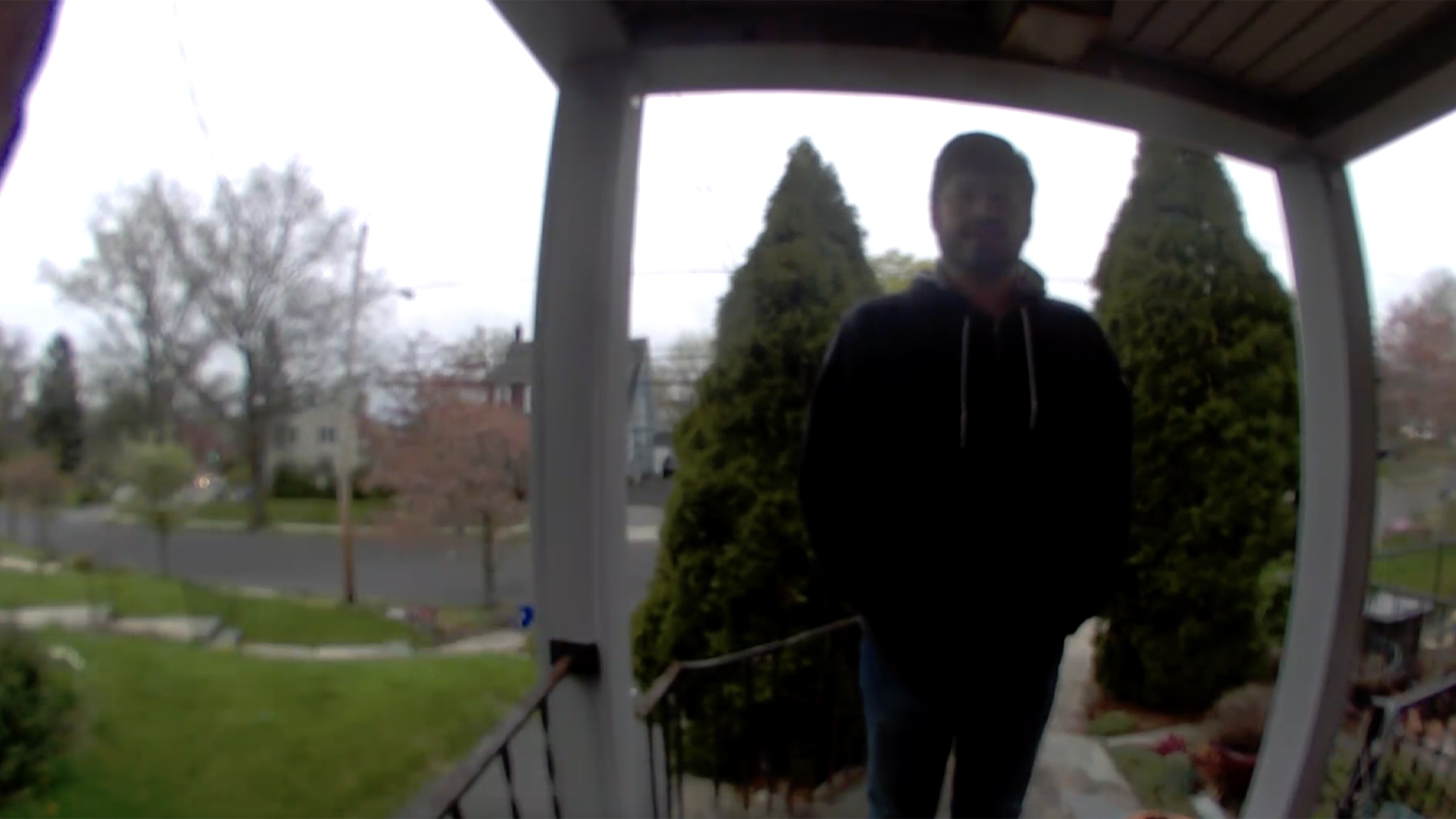
When standing at my front door, the Blink camera would cut me off at the waist. Ring’s would show everything down to my knees, and the Wyze would let me see all the way down to my feet.
Blink Video Doorbell review: Features and storage fees
If you purchase the Blink Sync Module 2 — which Blink recommends, especially if you’re running the video doorbell on battery power — you can plug a USB stick into the module, and save videos locally. It’s something you don’t get with the Wyze or Ring video doorbells, and a good feature to have if your internet connection goes down. And, because the storage isn’t on the video doorbell itself, you don’t have to worry about losing the recordings if someone makes off with your device.
That said, the one feature I wish Blink had was package detection. Both the Wyze Video Doorbell Pro and the Ring Video Doorbell (2nd gen) support this, and it’s invaluable in an age when we’re getting more deliveries than ever.
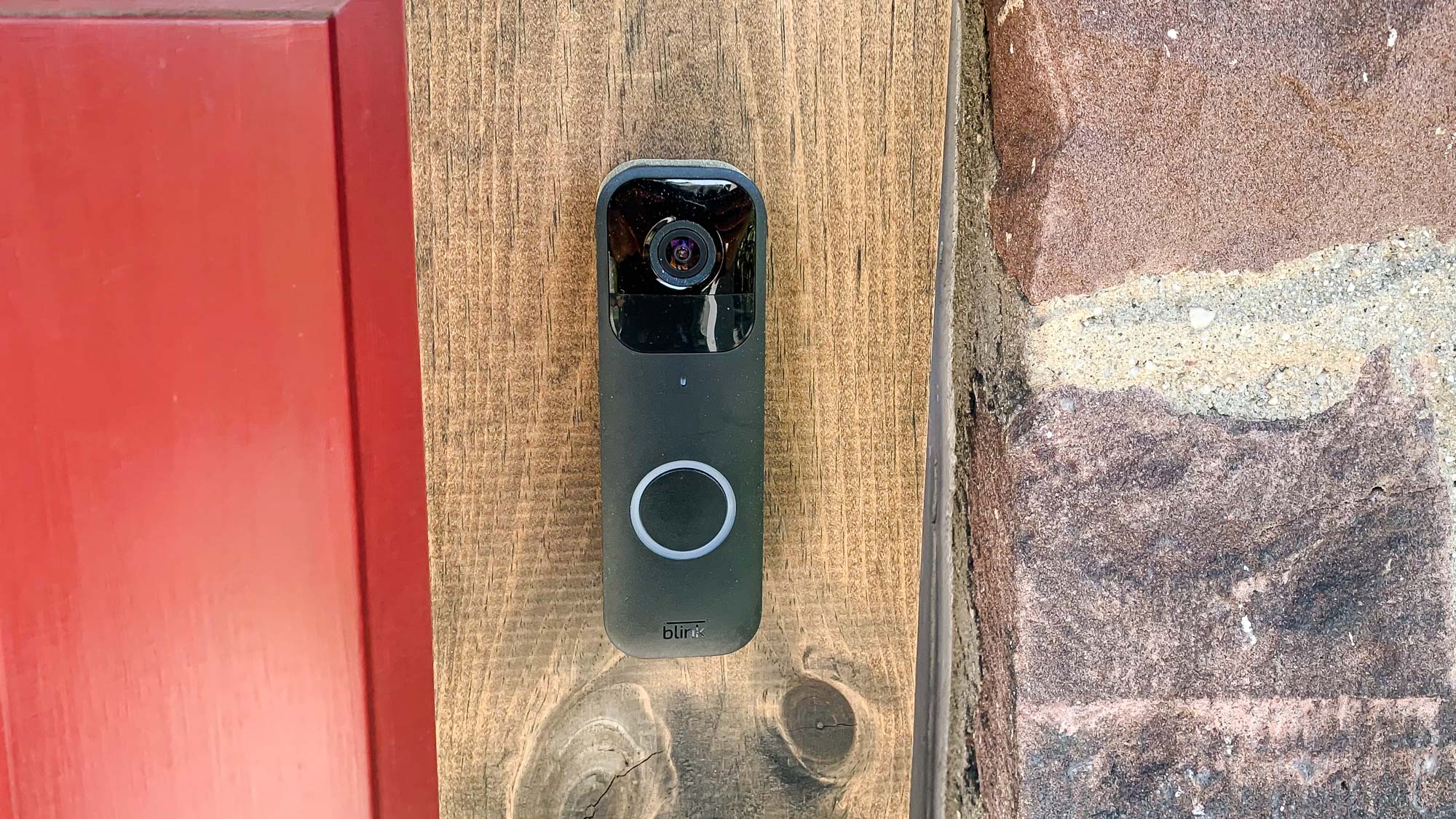
As mentioned earlier, a Blink subscription costs $3 per month per device, or $10 per month for unlimited Blink devices on an account. This is the same as Ring, which is not surprising, given that Amazon owns both companies.
Among budget video doorbells, the Wyze Video Doorbell Pro has a lower subscription price of $2/month (if billed monthly) per device. The company does not offer a plan for an unlimited number of devices at a given location.
For greater detail, be sure to check out our guide to security camera storage plans.
Blink Video Doorbell review: App and smart home compatibility
Blink’s app is pretty easy to use, even for novices. The home screen shows a recent static image from the video doorbell; icons in the bottom corners of the thumbnail let you update the photo or view live video from the camera.
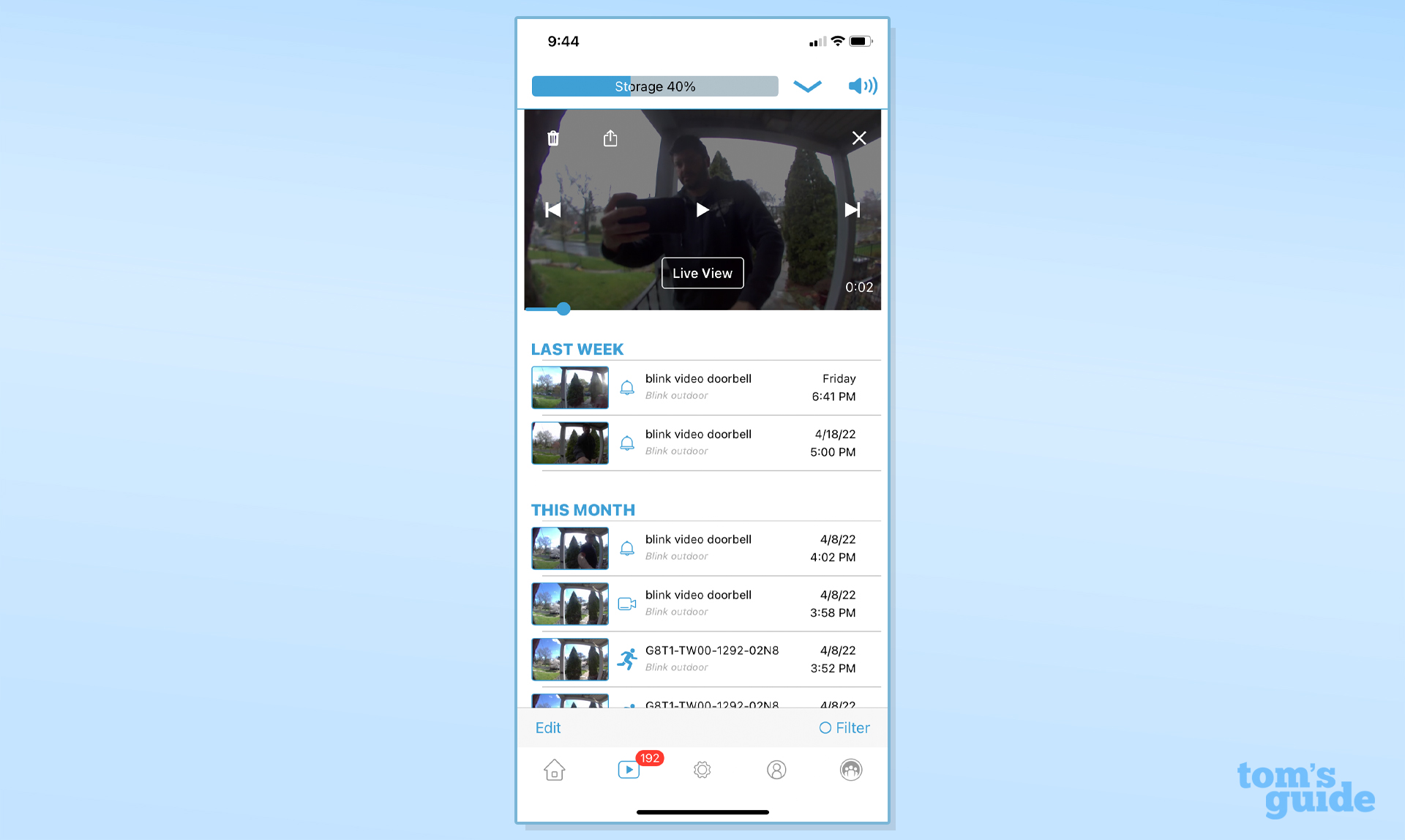
Along the bottom of the screen are icons that let you view recorded events and general settings for the app. If you want to customize the doorbell itself, you have to click the Settings icon that’s just above the thumbnail image. This provides you an impressively large array of customizations, including motion zones, camera sensitivity, clip length, night vision sensitivity and more.
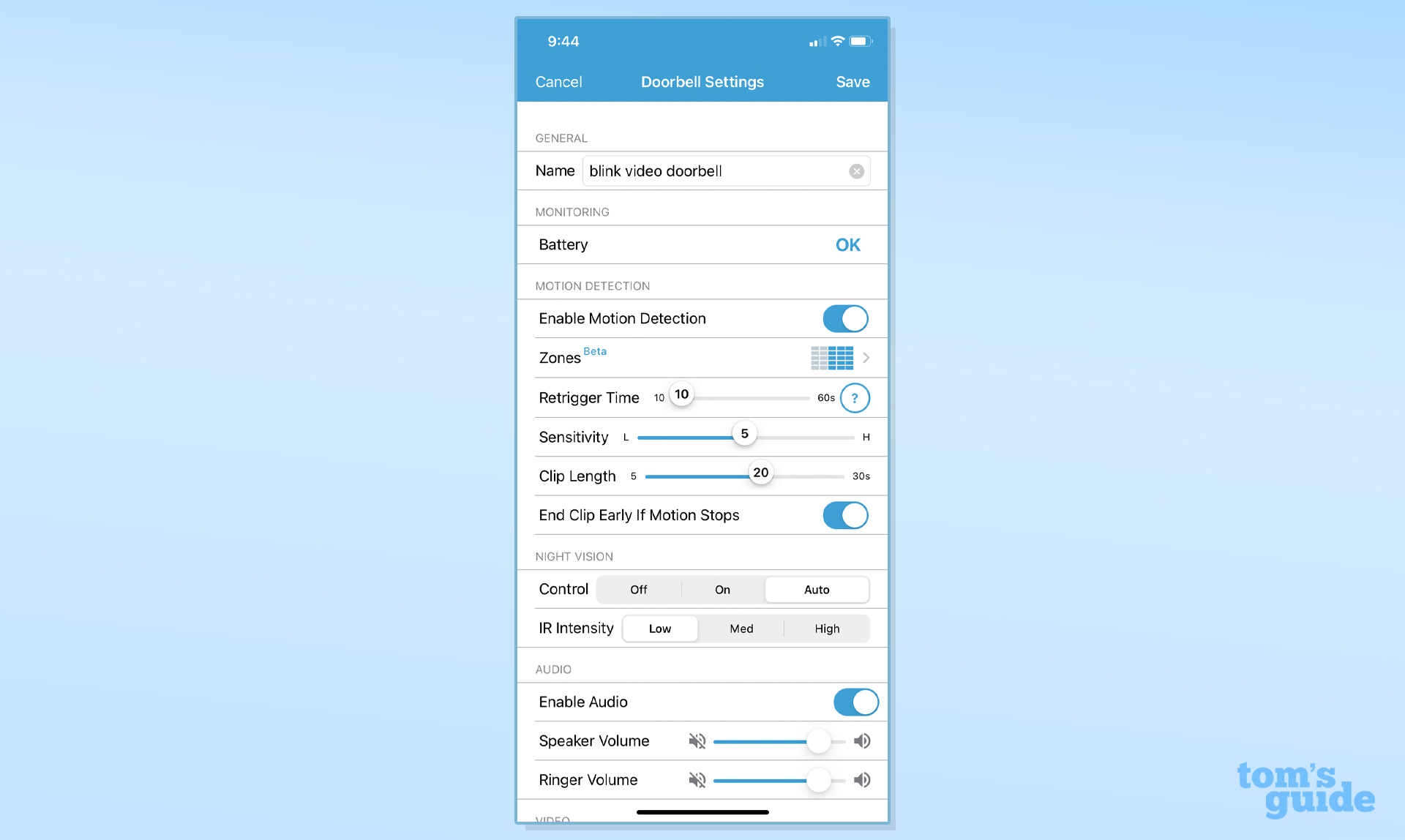
I especially like the custom activity zones. You simply tap individual rectangles to make that area active or inactive. It’s a lot easier than drawing polygonal shapes or multiple squares, as you have to do with other video doorbells.
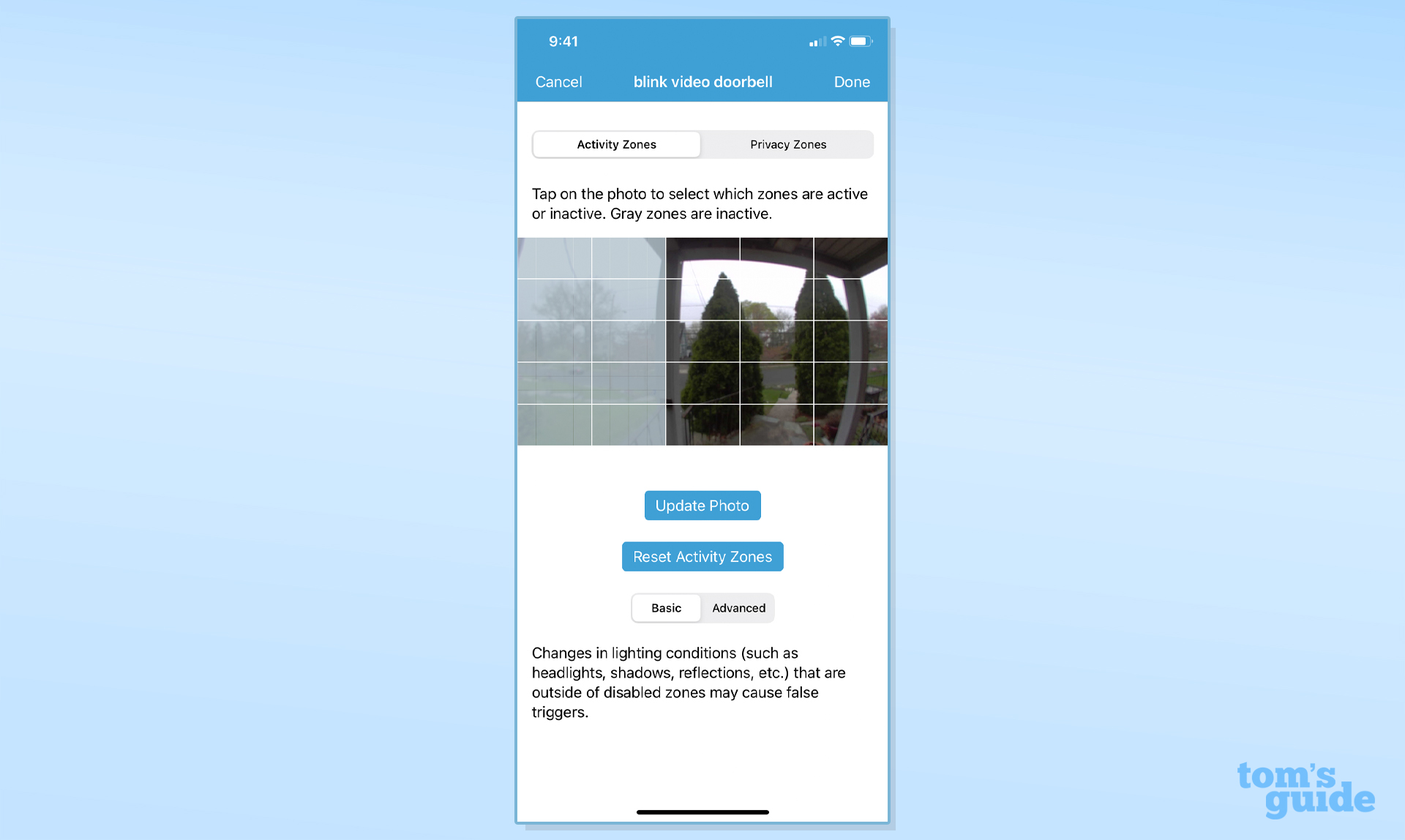
As Blink is owned by Amazon (which also owns Ring), the Blink Video Doorbell works pretty seamlessly with Alexa. If you have one of the best smart displays or a Fire TV device, you can call up a feed from the video doorbell and, in some cases, even talk to the person standing at your front door.
Blink’s cameras also work with IFTTT, but do not work natively with Google Home or SmartThings.
Blink Video Doorbell review: Verdict
At $49, the Blink Video Doorbell is one of the least expensive doorbells, especially if you’re looking for a model that can run wirelessly. But, like most things that are cheap, you have to accept several big compromises. My main issue is that the Blink Video Doorbell’s camera is of a lower quality and has a much smaller field of view than other video doorbells that cost less than $100.
The only other reputable video doorbell camera around this price range is the $59 Ring Video Doorbell Wired. That model can’t run on battery power, and worse, doesn’t work with your existing chime. However, it has a wider field of view.
The Ring Video Doorbell (2nd gen) costs $99, but will work with your existing chime, and has package detection. However, if you run it off batteries, you’ll be recharging it far more often than the Blink. There’s also the Wyze Video Doorbell Pro, which costs $89, comes with a wireless chime, and also has package detection — not to mention a cheaper subscription. My advice? Spend a little more for either of these two options, and you’ll be much happier in the long run.

Michael A. Prospero is the U.S. Editor-in-Chief for Tom’s Guide. He oversees all evergreen content and oversees the Homes, Smart Home, and Fitness/Wearables categories for the site. In his spare time, he also tests out the latest drones, electric scooters, and smart home gadgets, such as video doorbells. Before his tenure at Tom's Guide, he was the Reviews Editor for Laptop Magazine, a reporter at Fast Company, the Times of Trenton, and, many eons back, an intern at George magazine. He received his undergraduate degree from Boston College, where he worked on the campus newspaper The Heights, and then attended the Columbia University school of Journalism. When he’s not testing out the latest running watch, electric scooter, or skiing or training for a marathon, he’s probably using the latest sous vide machine, smoker, or pizza oven, to the delight — or chagrin — of his family.


